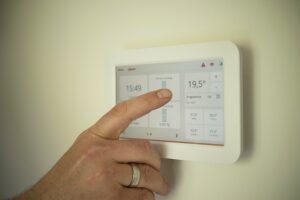 Researchers-manufacturers of fiber optic solutions from the U.S have presented new fiber Bragg grating sensors (FBG sensors) with copper and aluminum coating. Herewith, this fiber optic system has a compact size, it is hermetically sealed, and can maintain high temperatures leading to new opportunities for metal-coated fiber optic sensors.
Researchers-manufacturers of fiber optic solutions from the U.S have presented new fiber Bragg grating sensors (FBG sensors) with copper and aluminum coating. Herewith, this fiber optic system has a compact size, it is hermetically sealed, and can maintain high temperatures leading to new opportunities for metal-coated fiber optic sensors.
To be more precise, FBG sensors and gold-coated sensors allow for developing new “inherently humidity-proof strain, temperature, displacement, acceleration, pressure, load, tilt, bio, and other useful fiber sensors and systems.” The researchers claim that FBG technology is considered to be very useful for numerous sensing applications in harsh environmental conditions because of its benefits provided.
The benefits of FBG sensors include the ability of absolute temperature measurement, rapid response, numerous sensing points on a single optical fiber strand with minimal mechanical burden and intrusion, as well as EMI immunity, spark-free, and chemical inertness.
Nonetheless, such conditions as a high level of humidity or temperatures, corrosive chemicals, or strong mechanical stress often presented in real environmental conditions create obstacles for fiber optic sensors with glass coating. New FBG sensors with copper, aluminum, and gold coatings enable researchers to enlarge current applications and develop new ones.
It should be noted that such processes as stripping and recoating are necessary for all laser writing methods included metals. The researchers demonstrate a robust technique to produce fiber sensors with acrylate, polyimide, aluminum, copper, and gold coatings installed into conventional high-temperature fiber Bragg gratings, which then are recoated with acrylate, polyimide, or gold coatings.
Thus, such FBG technology makes it possible to change lengths of window stripping and recoating as well as control material thickness and length. Different types of inscription and coating allow for employing FBG sensors in different conditions from the cryogenic temperature of -200℃ to the high temperatures of +1000℃.
These FBG sensors have a metal coating, and they are created by excimer and/or femtosecond laser writing methods. Additionally, the fiber optic system has been already tested, and the results show specific benefits in offering multipoint and multifunction sensing abilities in a constantly expanding range of applications not previously addressable by standard FBGs. The thing is that the coating of properly designed fiber optic sensors plays a crucial role in the integrity, survivability, functionality, and durability of FBG sensors.
Optromix is a fast-growing vendor of fiber Bragg grating (FBG) product line such as fiber Bragg grating sensors, for example, fbg strain sensors, FBG interrogators and multiplexers, Distributed Acoustic Sensing (DAS) systems, Distributed Temperature Sensing (DTS) systems. The company creates and supplies a broad variety of fiber optic solutions for monitoring worldwide. If you are interested in structural health monitoring systems and want to learn more, please contact us at info@optromix.com


 A team of researchers presents a
A team of researchers presents a  Fiber optic sensors
Fiber optic sensors Distributed
Distributed  Nowadays
Nowadays  Fiber Bragg grating
Fiber Bragg grating Members of NASA claim that they plan to test an enhanced
Members of NASA claim that they plan to test an enhanced Researchers have presented dynamic gratings used instead of depending on fixed-position
Researchers have presented dynamic gratings used instead of depending on fixed-position  Modern industrial systems are subject to increasingly strict requirements.
Modern industrial systems are subject to increasingly strict requirements.  Researchers have been firstly created a
Researchers have been firstly created a